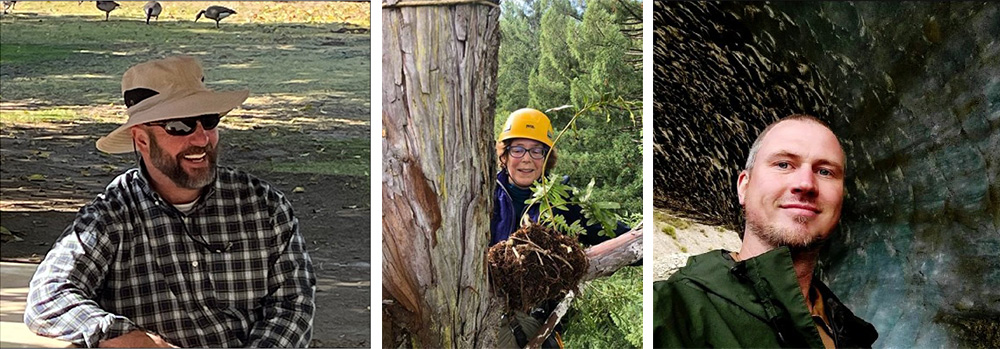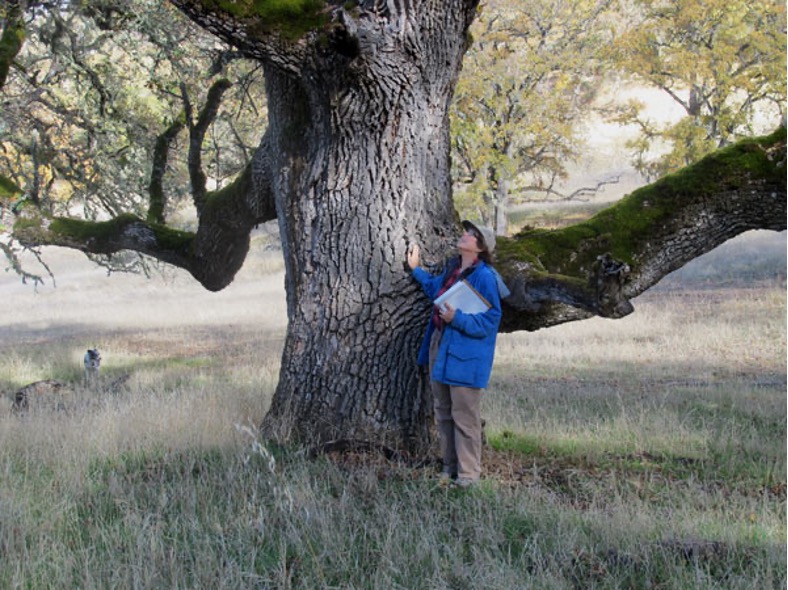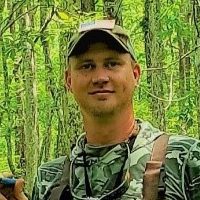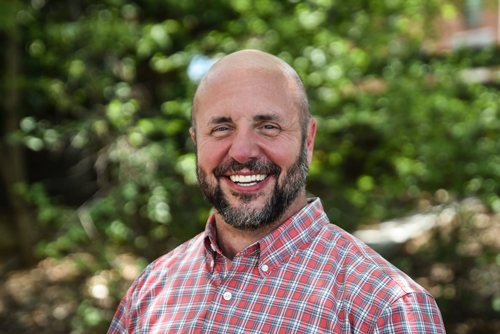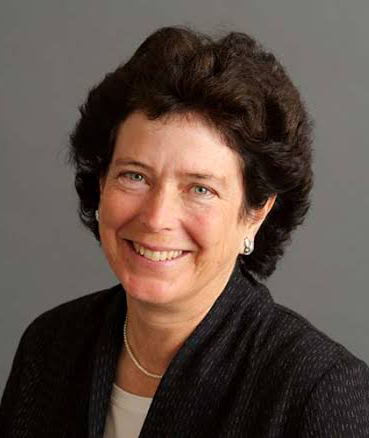How do we think about forests and their value? We know that forests store carbon, and with the climate changing, many might think the answer is to just plant more trees. Our guests challenge that conventional wisdom and, as the saying goes, help us see the forest for the trees. In Season 7, Episode 8, host Sarah Thorne and cohost Jeff King, National Lead of the Engineering With Nature (EWN) Program, US Army Corps of Engineers (USACE), are joined by Laurie Wayburn, Cofounder and President of Pacific Forest Trust (PFT), and Nathan Beane, Research Forester in the Environmental Laboratory of the USACE Engineer Research and Development Center (ERDC). They’re talking about how to sustainably manage forests to make them more resilient.
Laurie has dedicated her career to forest conservation and sustainability. She is an innovator, a pioneer, and an authoritative voice on forest practices and policy. Laurie grew up in a family where “going to church” meant spending time in the magnificent old-growth redwood forests of northern California. Early in her career, Laurie worked for the United Nations Environment Programme in developing countries, focusing on how to work with nature to provide for people’s daily needs. She notes, “In America, you tend to grow up thinking there are people, and there is nature. Working closer to the earth, you realize, no, there is nature and there are people in it.” She adds, “The time that I spent working in the UN really shaped what I do today, which is to focus on ways that we can provide financial incentives and a desired financial return by managing with nature and with forests in particular.”
Nathan’s love for the outdoors stemmed from his grandmother and growing up in South Arkansas, spending countless hours outdoors with her learning all he could. He pursued a degree in forestry at West Virginia University where he studied a rare type of high-elevation forest that was considered severely threatened by climate change, spending “two summers in a tent in the mountains” to gather data. This research helped him land a job at ERDC. While officially labeled a forester, Nathan says that he is more aptly described as a forest ecologist: “Foresters are known for cutting down trees, while forest ecologists study the environments where trees grow.” Nathan is the leading research forester within the US Department of Defense (DoD) and still spends a great deal of time in forests conducting research that supports both civil and military projects around the world. As lead of the Forest Ecosystem Dynamics Team at ERDC, his research primarily focuses on forest communities, their function, health, management, and sustainment, and ultimately the creation of “resilient forests.”
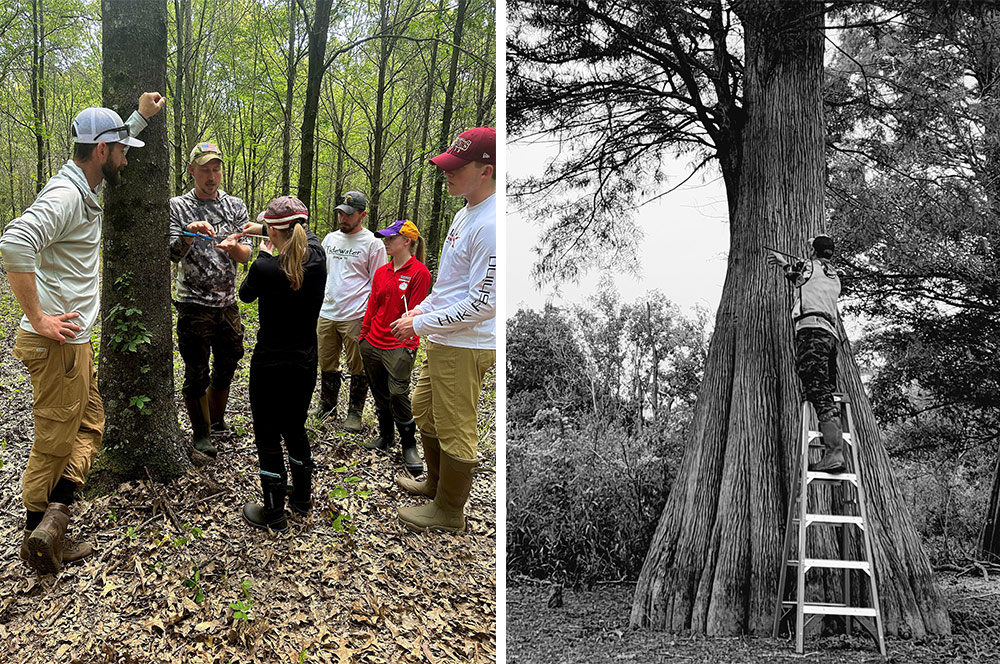
In their respective roles, both Laurie and Nathan speak for the forests. As Laurie describes it, “When people use the term forestry, what they’re typically thinking about is the production of timber or fiber commodities. That phrase, ‘seeing the forest for the trees,’ is all too apt because so many people think of forests just as a collection of trees. But they’re infinitely more than just trees.” She describes forest systems as beginning well below the ground and ending above the canopy with trees being the most visible piece of a storehouse of biodiversity that comprises the forest overall. Nathan agrees, noting, “While trees are oftentimes the poster child of a forest ecosystem, they sometimes steal the thunder, minimizing the complexity that forests offer, especially in a world with exacerbated effects of climate change. While forests provide key habitats for a range of wildlife, including threatened endangered species, they also generate oxygen, filter water, provide soil stabilization, carbon sequestration, ecosystem biodiversity, natural disaster mitigation, and flood control.”
Much of Laurie’s work at Pacific Forest Trust (PFT), which she cofounded with Connie Best in 1993, is working with private landowners on conserving forests. She notes that most people don’t really think that much about private forests, even though most of our forests are privately owned: “The forests we are losing are privately owned. This is kind of a hidden crisis. Every year in the US, forest land roughly the size of the state of Delaware disappears as it is converted into other uses.” She adds that the PFT was founded to address this crisis: “The why is very simple. It’s in the financial best interest of landowners to either convert or to harvest as much timber as possible. We wanted to work with what I would call the enlightened self-interest of private landowners and make it financially competitive, or even more desirable, to keep their forests as forests, not just as plantations, but to manage them as forests with the full suite of functions.”
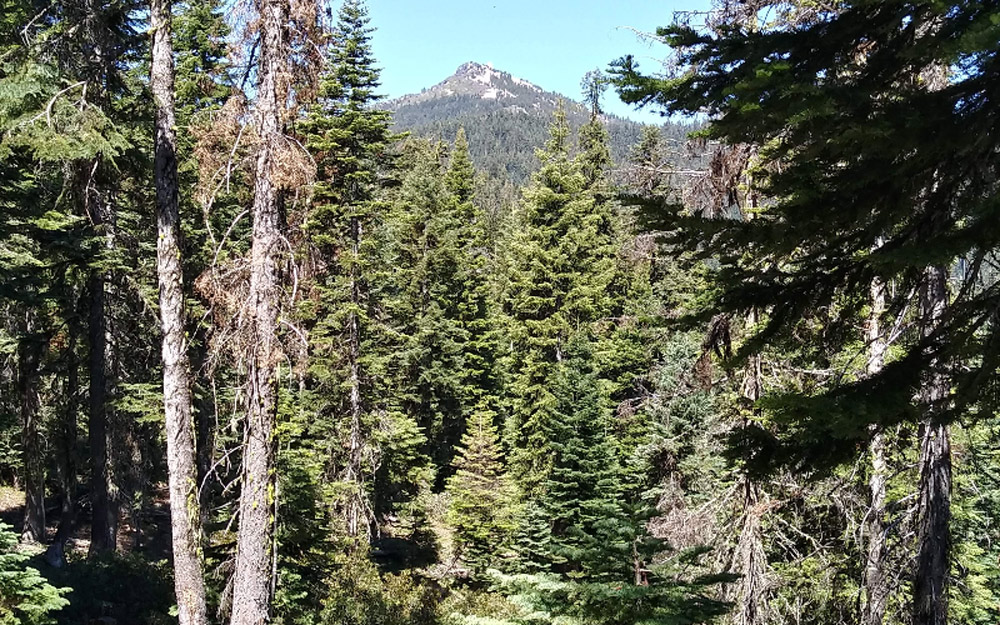
Laurie notes that, fortunately, there is a tool in the US legal toolbox, the conservation easement, which is a voluntary agreement with a landowner that enables landowners to dedicate their land forever to be managed for natural forest function, inclusive of, but not limited to, timber and fiber production. “It’s a fantastic tool that pays landowners dollar for dollar for the opportunity cost of keeping their land as well-managed forests. It’s an extraordinary tool, but it was never being used for this purpose until we began the PFT.”
Nathan’s work on addressing problems in forested lands on USACE and DoD installations complements the efforts of Laurie and the PFT. His on-the-ground research helps to inform a more comprehensive understanding of healthy forest ecosystems and how to improve their management. “I get many opportunities to travel and look at whatever problems there may be, and then I do research to try to discover and develop solutions to address those issues.” He adds, “The USACE has over 400 lake and river projects across the nations. That’s over 42,000 miles of shoreline and a land base of over 12 million acres. As part of this land ownership, the Corps has to offer safe public access with a host of outdoor recreational activities. There are more than 260 million visitors each year at these Corps projects. Additionally, the Corps serves as stewards of these lands and waters. As a result, conservation management and resiliency are key components of the National Resource Management framework, ensuring a balance between environmental priorities and the recreation needs of visitors.” Nathan describes a specific research project at Marine Corps Air Station Beaufort focused on quantifying the amount of carbon stored in forest systems: “We launched a pilot study last year at the Townsend Bombing Range in Georgia. The goal was to quantify the amount of carbon in trees, in both the aboveground and belowground biomass, as well as looking at the soils in both wetlands and forested habitats across that installation. A vast majority of the carbon research is done using remote sensing, but there’s not a lot of ground validation incorporated into those efforts. So, our team collects that data on the ground to validate the estimates and provide more realistic numbers for carbon storage and sequestration opportunities.”
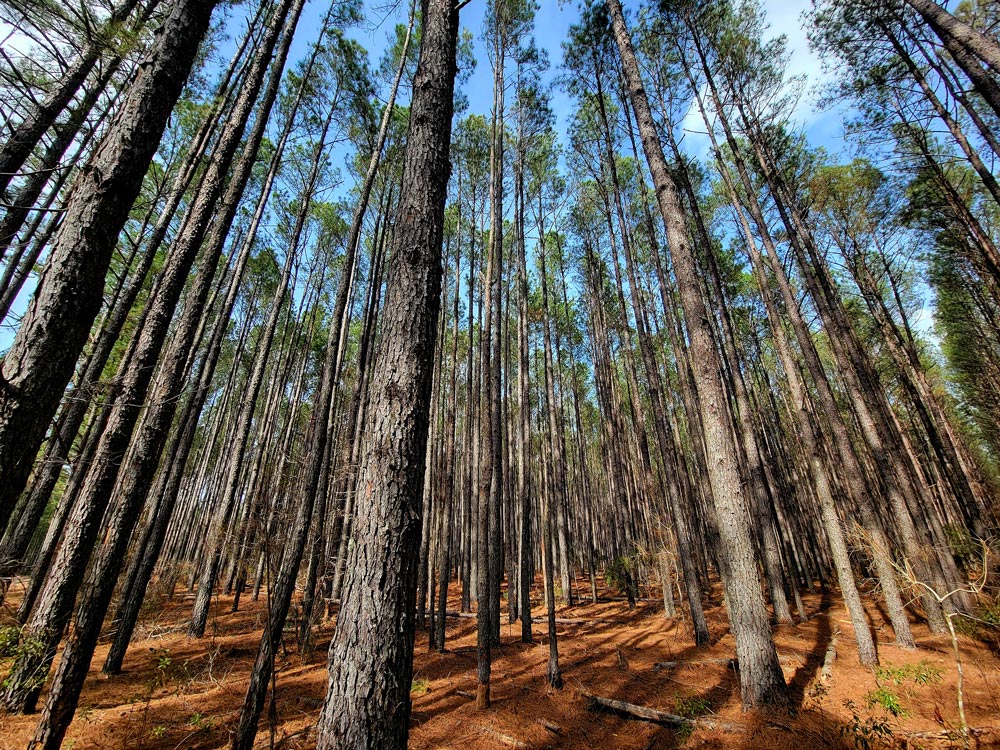
Jeff applauds the adoption of nature-based solutions by the DoD: “Deb Loomis, Climate Advisor to the Secretary of the Navy, has really leaned into and been a strong advocate for incorporation of nature-based solutions into the entirety of the resilience plans for these military installations. She was an architect of the Navy’s Climate Action Plan 2030, which also highlighted the need for the Navy to integrate nature-based solutions into their resilience strategies, as well as this idea of thinking more and acting more when it comes to carbon sequestration and how the Navy can do that better. I’m so excited about what Ms. Loomis is doing and certainly a big fan of all the work that they’ve done and very grateful to the Navy for their collaborations with the EWN Program.”
As the episode wraps up, Laurie has a strong call to action for listeners: “One of the most critical things I hope we can help people think about is forests are essential infrastructure. Just as we think about roads as essential infrastructure, or the internet as essential infrastructure, that we couldn’t possibly live without; well, actually we probably could. But we could not live without the essential infrastructure of forests—this is where our oxygen comes from; this is where our clean water comes from; this is where so much of our food comes from.” She adds, “As you go about your daily life, whether or not you live in a forested environment, be aware of, and grateful for, the grace and blessing of forests and return the favor. They don’t exist without people caring and being involved. So, the most critical thing is that people care. Every single person can make a huge difference in ensuring that those forests are there for us if we are there for them.”
Nathan agrees: “I’m a big advocate for that. I think it’s important to highlight that it’s critical that we understand the complexity of forests. It’s more than just those trees and the monoculture systems that are often implemented today. Having an understanding of forest ecosystems at a broad scale is really important, particularly in a post-wildfire landscape. We have a lot of challenges ahead of us, and I think it’s really important that we continue to conduct research in this space. I’m really glad to be a part of the EWN Program that supports this.”
Jeff and Sarah close by thanking Laurie and Nathan for their insight and sharing their passions for the forests and the critical work that they are doing to help protect forest systems and make them more resilient.
